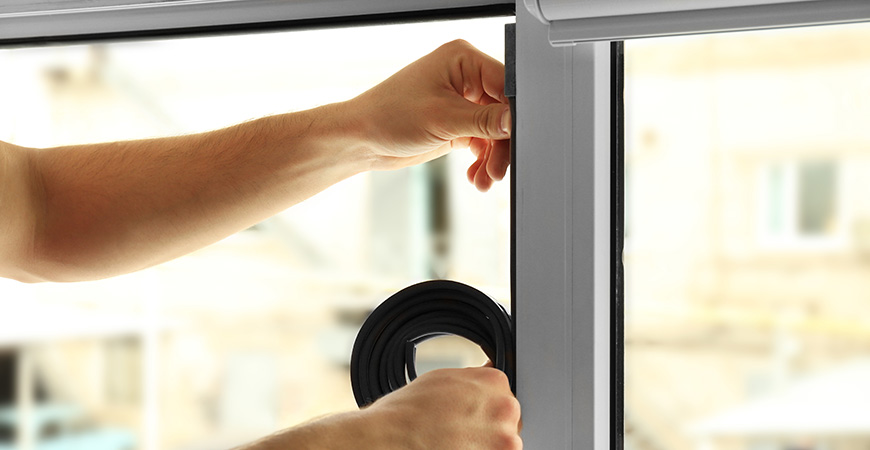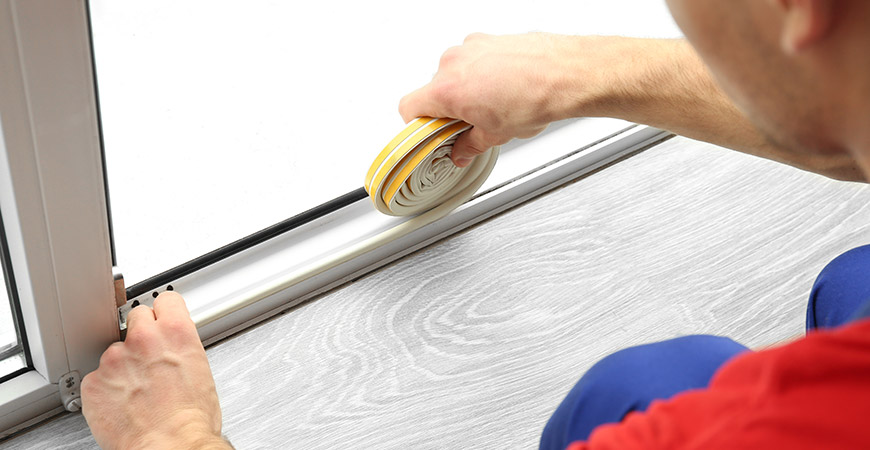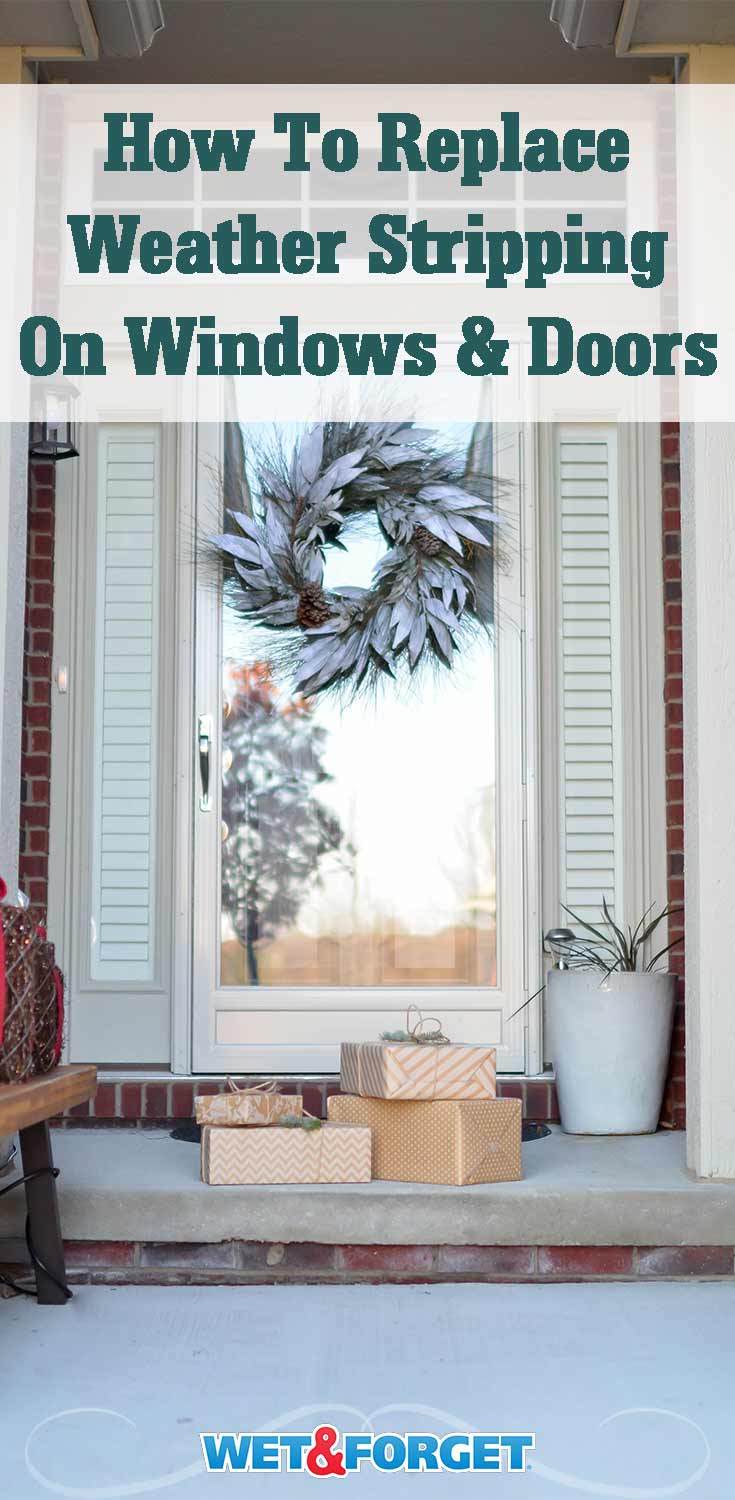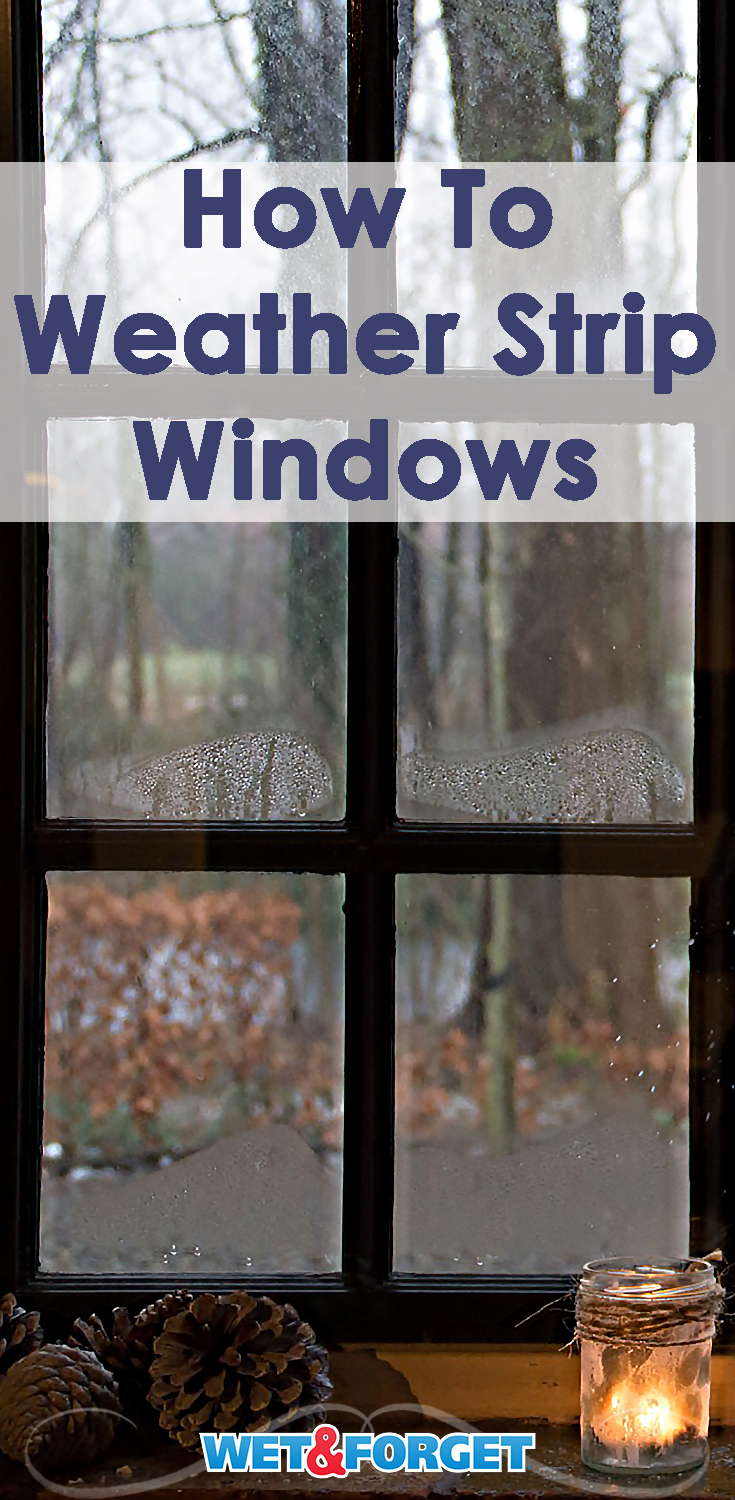What Is The Metal Strip That Is In My Exterior Door Frame With All The Nails In It?
Weather Stripping How-Tos for Doors and Windows
Do your windows rattle on a windy twenty-four hour period? Do you feel a slight draft when yous stand up adjacent to an outside door? If and then, your indoor air, either heated or cooled, is leaking outside from the weather condition stripping.
This tin can become an expensive problem that will evidence upwards on next month'southward utility nib. That's why adequate weather stripping for doors and windows is essential.
Worn or insufficient conditions stripping is often the cause of chilly indoor drafts in the winter and heat proceeds in summertime. According to Energy.gov, sealing a drafty firm tin save y'all more than 20% of your heating and cooling bills.
Is there one blazon of weather condition stripping that works ameliorate than others?
Weatherstripping is manufactured from a variety of materials including cream, felt, vinyl, sponge prophylactic, aluminum, and stainless steel. Information technology is available in two types – agglutinative-backed cocky-stick tape and smash-on strips.
Furthermore, the type you choose will depend on your particular window or door configuration.
Cocky-stick weather stripping for doors and windows –
Self-stick weather stripping is springy, pliable, and commonly made of foam, felt, vinyl, or sponge rubber.
The user-friendly adhesive backing makes installation piece of cake. This self-stick version is often used where using nails isn't possible. The self-stick type is best for sealing a window that is too irregular.
Nail-on weather condition stripping for doors and windows –
Nail-on atmospheric condition stripping is rigid and usually made of aluminum, vinyl, statuary, or stainless steel. It is ordinarily available in a Five-shape, or in a coiled tube blueprint. In comparing to the self-stick variety, the nail-on version is more secure since it is nailed into identify.
Cocky-stick vinyl in a V-shape or a flexible strip –

This textile will create an air-tight seal. Especially when pressed against the sides of a crack.
Best Employ – For double-hung or sliding glass windows. Or for the sides and top of a door.
Cost – Moderate. The toll will vary depending on the cloth.
Pros – Self-stick vinyl is durable and like shooting fish in a barrel to install. Moreover, it's non noticeable when properly practical.
Cons – For cocky-stick vinyl to work well, the door or window surface should exist smoothen and perfectly flat. Cocky-stick vinyl may create resistance when opening or closing doors or windows.
Tubular rubber or vinyl –
Vinyl or sponge rubber tubes are available with a flange along the edge which is used to staple or nail it into place. The door or window presses against information technology to class a tight seal.
Best Apply – Around a door
Cost – Moderate to high
Pros – Makes an effective air barrier
Cons – Self-stick types can exist difficult to install
Nonporous Foam Record –
Best Use – Window sashes, door frames, attic hatches, or inoperable windows. Also works well in corners and around cracks.
Cost – Low
Pros – Easy to install. And, if you demand reinforcement, just apply some tacks or staples.
Cons – It'south best to utilise nonporous cream record in areas that experience minimum article of clothing every bit product durability may vary. Visible to the eye.
Felt –
Available in regular felt, or reinforced felt with a metal strip – sold in rolls. Felt tin can be stapled, nailed, or glued into place. The best-felt seal is accomplished by stapling parallel to strip length. Durable, 100% wool felt is the best choice, but is more expensive.
All-time Employ – Fitted into a door jamb. For reinforced felt, around a window or door.
Cost – Low
Pros – Inexpensive and like shooting fish in a barrel to install
Cons – Minimal immovability; does not circumvent the flow of air well. Do not utilize felt in a location that is continually exposed to moisture. Moreover, information technology is visible to the centre.
Removing Sometime Weather Stripping from Doors and Windows
What You'll Need
- Pry bar
- Screwdriver
- Clawhammer
To remove weather condition stripping from doors –
- Remove the door from the hinges to proceeds access to the old weather stripping.
- Locate the weather condition stripping. Typically, it is where the door connects to the jamb. It may besides be found at the acme and bottom of the removed door.
- To remove information technology, place the pry bar underneath. Secure the pry bar in identify with a hammer with a light tap or ii.
- Pull the pry bar toward you to dislodge the old weather condition stripping. Move along the door jamb and beyond the top and bottom of the door to remove all old conditions stripping. Lastly, use a screwdriver to remove it if it has been fastened with screws.
To remove weather stripping from windows –
Remove all chipped or loose paint that is touching the weather stripping. For stick-on weather stripping, gently pull to remove it, or use a putty knife.
Furthermore, if you take worn, metal-border weather stripping, apply needle-olfactory organ pliers to remove tacks or nails.
Applying Atmospheric condition Stripping to Windows and Doors

First, prep the surface – It'southward e'er a good idea to start with a clean, dry surface. Remove all adhesive left on the surface with a cleaner or with a fine-dust sandpaper.
For holes, utilize wood filler and sandpaper. Too, fill up old screw holes.
Footstep ane
Mensurate and add together together the numbers for the perimeter of the window or door. Also, add v% to ten% to the result to make sure yous will accept enough cloth for the job. (Keep in mind weatherstripping comes in several widths.)
Footstep two
Read the instructions on the package to determine what tools yous'll need and the specific methods used for installation.
Below are a few general installation guidelines to follow-
- Apply weather stripping to the entire door jamb; adding it in one continuous strip, forth each side of the door.
- Weatherstripping should meet tightly at corners
- Choose a thickness that will cause the product to press tightly between the door and the jamb. Only not then tight that makes the door difficult to shut.
- For windows, apply information technology between the frame and sash. Choose a thickness that will seal tightly, but not interfere with window operation.
- Employ new weather stripping to a clean, dry surface. Outside temps should exist above twenty°F (-vii° C).
- Double-check your math by measuring the perimeter of your door or window twice – and cut once.
- Weatherstripping should be snug against both surfaces. Plus, information technology will create a weather-tight seal when compressed slightly on the door or window.
Interested in more domicile improvement tips? Visit here. For additional window care how-tos, click here.
Rein in your heating and cooling bills by replacing old, worn atmospheric condition stripping for doors and windows. Your wallet will thank you!



Source: https://askwetandforget.com/weather-stripping-tos-doors-windows/
Posted by: bryantmants1963.blogspot.com

0 Response to "What Is The Metal Strip That Is In My Exterior Door Frame With All The Nails In It?"
Post a Comment